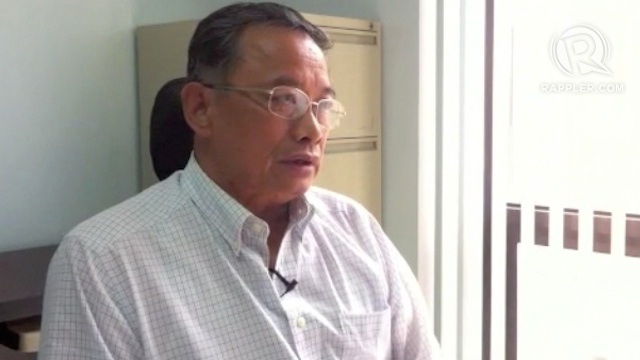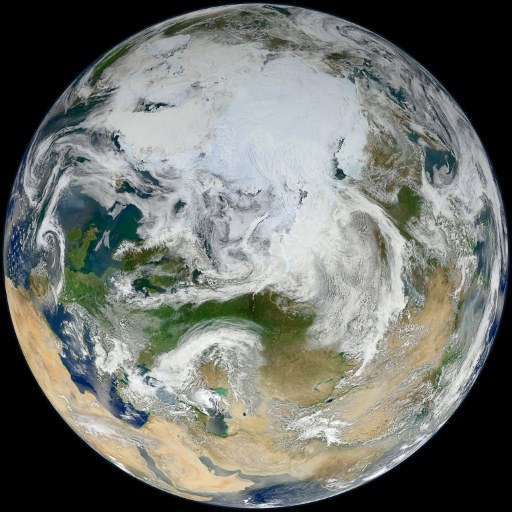SUMMARY
This is AI generated summarization, which may have errors. For context, always refer to the full article.

MANILA, Philippines – When the Intergovernmental Panel on Climate Change (IPCC) needed a coordinating lead author for a chapter of their latest report that will focus on the polar regions — the ice-covered areas recognized as the north pole and south pole — it turned to someone born and raised in the tropics.
They asked Dr Josefino Comiso, senior scientist at the NASA Goddard Space Flight Center in the United States, to head a chapter on Cryospheric Sciences, a field of study focusing on the Earth’s vast, frozen areas, scheduled to be included in the next IPCC report.
Comiso, a Filipino scientist, is considered as one of the leading experts on polar science in the world. He has been dabbling in the world of physics since the 1960s, first at the University of the Philippines (where he completed his BS Physics degree in 1962), then at the Philippine Atomic Research Center, the Florida State University, and the University of California in Los Angeles.
His first field of interest was particle physics, studying the minute details that comprise matter. At this time, he worked with scientists at several US universities. Then, in the early 1970s, he learned about a new NASA program on climate change at Goddard, and with that he saw a “big chance” to jump to this new field.
“It was the time when the Keeling Curve came out,” Comiso said, referring to the graph showing the ongoing ‘monotonic’ rise in carbon dioxide levels in the atmosphere, and is widely credited to have first brought attention to the issue of increasing greenhouse gases.
He then saw the potential of remote sensing techniques for the study of the planet’s climate, and since then, he has focused his studies on satellite remote sensing, polar processes, and sea ice.

Why this field of study? Comiso said that the impact of polar science is global, especially when climate change is concerned.
“It’s not just a local study; It’s basically a global study,” and the implications are planet-wide — the tropical regions, where our country is, included. “Climate change is global. It’s not just confined to one area,” he said.
His interest in this field of study has resulted in around 120 published papers, 4 books (either authored or co-authored), 20 chapters in other books.
Believer in Pinoy potential
Climate change isn’t just the only thing global that Comiso has great interest in: He is also a believer in the potential of the Filipino to make it big.
“I’ve been coming back mainly because I felt that the country is lagging behind other countries,” the scientist said. He said it’s important for him to come back to the Philippines because he wants to help the country move forward.
He felt that some Filipino scientists who have gone abroad have decided to stay abroad, thus failing to bring back home knowledge that could help improve the country.
“I felt that maybe if I can find a way to help, I should offer my help to, maybe, introduce the technology I know.. and help out in bringing the country to a level where we can be more competitive,” he said.
One way he is doing this is by introducing new ideas to scientists here, in particular technology that are readily available online and can be harnessed at minimal or no cost at all for both our scientific and economic advancement.
“If we don’t take advantage of [technology], not only do we lose an opportunity to make money ourselves, we are letting other countries to take advantage of [our] resources,” he said.
He believes Filipinos’ talent only needs to be harnessed properly to be more competitive.
“If you you think about talent, the FIlipinos are not really short of talent; it’s just that talent needs to be developed,” he said. “If developed, we can catch up.”
He is also helping other Filipino scientists by bringing them to NASA, where they conduct research.
“I feel encouraged to bring in more Filipinos over there (at NASA), especially those with advanced degrees already, so they can contribute to the field,” he said.
“I think Filipinos are generally very smart, and some of the smartest people in the world are Filipinos. We don’t have the kind of preparation that other countries have. Sometimes we have to play catch-up to get there, but… we manage to catch up,” he said.
Despite his busy schedule in the US, Comiso regularly comes back to the country for talks, symposia, workshops, meetings, and research with local-based scientists, and works closely with other Filipino scientists based in the US.
He is part of the Philippine American Association of Scientists and Engineers (PAASE), as well as a “Balik Scientist” under the DOST.
During his latest trip just this May, he participated at the 1st National Symposium and Workshop on Environmental Science, and worked or met with local scientists for various studies and programs.
He said he will continue making a contribution both to his scientific field and to his country as long as he can.
“As long as I’m useful, as long as I can make a contribution, as long as I feel I’m productive… I would like to continue,” he said. – Rappler.com
Add a comment
How does this make you feel?
There are no comments yet. Add your comment to start the conversation.